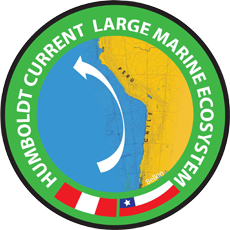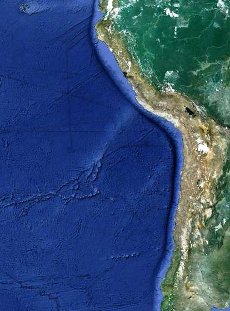The EBM Strategic Action Plan
Ecosystem Based Management and the Humboldt Current Large Marine Ecosystem: Chile - Peru.
There are 4 primary categories of ecosystem (nature) services:
1. Provisioning services are the products obtained from ecosystems, such as food, genetic resources, fiber, and energy.
2. Regulating services are the benefits obtained from the regulation of ecosystem processes, such as regulation of climate, water, and some human diseases.
3. Cultural services are the non-material benefits people obtain from ecosystems through spiritual enrichment, cognitive development, reflection, recreation, and aesthetic experience. Supporting services are ecosystem services that are necessary for the production of all other ecosystem services. Examples include biomass production, production of atmospheric oxygen, nutrient cycling, water cycling, and provisioning of habitat.
4. Supporting services are ecosystem services that are necessary for the production of all other ecosystem services. Examples include biomass production, production of atmospheric oxygen, nutrient cycling, water cycling, and provisioning of habitat.
The EBM Strategic Action Plan – Roadmap, a way to reach the goal.
Assess and evaluate all areas, answers that will came up during the development of this project:
1. Nature's Services:
a.Which nature's services does the geographic area provide, and where are they produced within the area?.
b.How important or valuable are the nature's services provided in the geographic area?
c.What nature's services do people want and need from the focal area in the future?
d.Based on societal values, what quantitative management goal should be set for each type of nature's service in the area?
e. How might nature's services change in the future under different management scenarios?
2. Scientific Evidence:
a.How do species and ecological processes in the focal area generate nature’s services?
b.How do human activities affect ecosystem services in the focal area?
c.How much do people value (including market and non-market values) nature’s services from the focal area?.
d.What are the tradeoffs among human activities in terms of their impact on nature’s services?
e.How can scientific monitoring and models be used to measure key changes in nature's services, outcomes of management actions, and progress toward EBM goals?.
3. Geographic Scales:
a.What are the natural, political, and administrative subareas that make up the focal area, and what role do subareas play in generating nature's services? Examples of subareas are watersheds, bays, and towns.
b.What are the larger natural, political, and administrative regions in which the focal area is embedded, and how does the focal area contribute in terms of nature's services? Examples of larger areas are biogeographic regions, ocean basins, and nations.
c.What data are available for integrating across geographic scales to understand the focal area’s natural characteristics and human dimensions?
d.Which organizations are working on elements of EBM in the subareas or larger regions, and how can they share knowledge, align goals, and take complementary action?
4. Ecological Linkages
a. Is there a conceptual model of ecological linkages in the focal area, and is it accessible as a decision-making tool for everyone engaged in EBM?
b. What are the key ecological linkages that should be given special attention in decision-making?
c .What tradeoffs and cumulative impacts are suggested by these ecological linkages?
d .Based on information about ecological linkages, how could policies, regulations, enforcement, and other management practices be changed to sustain nature’s services?
5. Cumulative Impacts:
How do human activities, some of which may seem relatively harmless on their own, combine to impair nature’s services?
How can policies, regulations, enforcement, and other management tools be changed to account for these cumulative impacts and better sustain nature’s services?
6. Tradeoffs Among Human Activities:
What direct and indirect tradeoffs occur or could occur among human activities in the focal area?
When a particular human activity occurs and reaps benefits from nature’s services, does it cause other nature’s services to decline?
How could occurrence of one type of human activity affect the viability of other human activities?
7. Adaptive Management
Can management actions be treated as experiments with the outcomes measured through scientific monitoring?
Can scientific monitoring of nature’s services be used to determine net changes in societal benefits due to management actions?
How can management practices be adjusted as new scientific information enhances our understanding of human impacts and ecosystem function?
Does scientific monitoring show acceptable progress toward EBM goals for nature’s services and net societal benefits? If not, how can management practices be changed to produce better outcomes and make more progress toward the goals?
8. Network of People and Information
Who are the individuals and groups with a direct or indirect interest in using, appreciating, or sustaining nature’s services from the focal area?
How can these individuals and organizations interact to define a vision for the future and to pursue goals for sustaining nature’s services?
How can they establish, support, and participate in an EBM network that facilitates communication of information, ideas, and viewpoints among diverse individuals and organizations?











